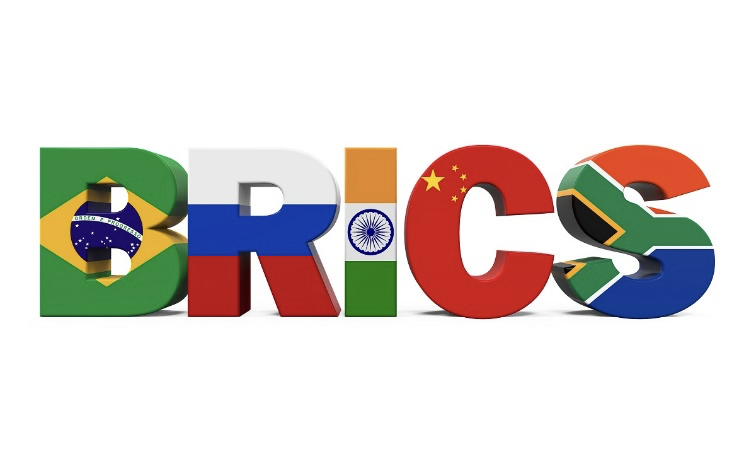By Bob Brewer, Braumiller Law Group
It was about two years ago I recall writing an article on the QUAD, whose members are the U.S., India, Australia, Japan. It was truly a head scratcher to me as to just how India, Modi specifically, was able to navigate between the BRICS meetings and the QUAD, as the QUAD was established primarily as a deterrent to China. It’s always been about picking sides and deterrence, therefore the BRICS countries (Brazil, Russia, India, China & S. Africa) who held their first formal summit in Yekaterinburg, Russia, in 2009 have sought to expand. South Africa joined the bloc in 2010, and on January 1, 2024, Egypt, Ethiopia, Iran, and the United Arab Emirates also became members of BRICS. The new world order apparently has some merit as more than 30 nations have reportedly submitted applications to join the BRICS alliance wanting to reduce reliance on the US dollar. This wave of applications is a testament to the trust in the BRICS alliance as a viable option to a traditional economic structure. The BRICS alliance has broad shoulders and is representative of considerable economic growth. It offers a platform for countries to trade in local currencies, paving the way to be less dependent on the almighty U.S. dollar. Simply put, it’s the BRICS answer to the G7. The next meeting is scheduled for October in Russia, which would allow Putin to actually attend in person rather than virtually. (Avoiding an arrest for war crimes)
You may ask, “Is BRICS actually organized enough to unseat the U.S. dollar, or is this just tough talk?” Well….in scope, BRICS covers about 30% of the world and represents roughly 45% of the global population, which translates to a combined nominal GDP of approximately US$28 trillion. They also hold an estimated US$4.5 trillion in combined foreign reserves. Given this leverage, Xi Jinping and Putin are laying the groundwork for the new world order, with confidence that pushing the U.S. dollar aside isn’t just some pipe dream. In reality, De-dollarizing would need the support of a myriad of exporters and importers, as well as borrowers, lenders, and currency traders around the world to get onboard with using other currencies. It boggles the mind quite frankly given the fact that the U.S. dollar is profoundly dominant in the world of trade. Some fun facts: Among trade invoicing from 1999-2019, the USD accounted for 96% in the Americas, 74% in the Asia-Pacific region, and 79% in the rest of the world. Europe is the only exception, where the euro is dominant. The bottom line, the USD is involved in nearly 90% of global foreign exchange transactions, making it the most traded currency in the FX market.
Unseating the U.S. dollar in trade, well, many experts say it just isn’t possible, but Xi and Putin disagree. They are reminding developing countries (who they have heavily invested in) that the looming $34.4 trillion US debt is not a good thing to have in one’s portfolio. Developing economies, therefore have looked elsewhere for security and have been accumulating gold vs US dollar reserves. BRICS countries are actually the largest gold purchasers, which one could surmise is a definitive signal to the west that there are major vulnerabilities with the US dollar.
So, it begs the question, what moves have been made on the global stage that would lead one to even remotely believe in a possible dethroning the dollar? For starters, the addition of oil-producing countries into the BRICS club was not by chance, but instead was a well-planned move to advance the de-dollarization agenda, with an ultimate goal of shaking up the oil trade’s currency allegiance. However, directing mandates on what currency should be used has not been well received. Take the example of India turning away from Russian oil (which they had purchased at a discount with the U.S. sanctions and cap in place). Modi, snagged nearly $7 billion in savings over two years. Russia directing India as to what currency (the yuan) should be used was a deal breaker. Instead. India is increasingly using the Indian rupee for trade settlements in oil transactions. With India, the default payment currency for crude oil imports has always been the US dollar, but in a move to internationalize the Indian currency, the Reserve Bank of India allowed importers to pay with rupees and exporters to be paid in rupee. Recently, India made its first-ever payment in rupees for crude oil purchased from the UAE, opening the door to making the local currency more global.
It’s not just India of course as developing countries, weighed down by a combined debt of $34 trillion and holding billions in US dollars as reserves, are looking for an alternative like BRICS to mitigate risks. For China and Russia, the BRICS bloc is their power play with an ever-growing list of emerging economies all standing in unison to dethrone the dollar. Their game plan is obviously worth a quick review as to where it currently stands—good luck from my perspective—as the dream of a new financial global landscape, one that is squashing the US dollar’s once stronghold on global trade is a long shot at best.

